Allowing kids to wear compression socks depends on several factors. For some severe health issues, compression socks should be completely avoided. Otherwise, you can let your child wear these socks. But it is risky to allow these socks just because they have various benefits. You should consult with pediatricians or doctors. Using the socks as per their prescription is the safest way.
Introductions
Compression socks are one of those wearable items that offer various health benefits. This item is already popular among people of different ages, as they are getting relief by using it. So the question is, can kids wear compression socks? Is it safe for them?
This article will address all of your concerns about compression socks for young adults. Let’s get started.
What are Compression Socks?
Compression socks are a type of socks that provide a feeling of compression after wearing. It is also known as compression stockings. This is a specially made, stretchy type, so after wearing, users get the feeling that their legs are being squeezed, as these socks are usually tighter than normal socks.
Can Kids Wear Compression Socks?

Whether kids can wear compression socks depends on different factors. Such as
- Medical conditions: For certain health conditions, doctors recommend using kids’ compression socks.
- Sports activities: Children who are involved in athletic activities can use this type of sock to increase blood flow and help prevent potential injury.
- Long trip: Sometimes, wearing compression socks for long trips or flights can help children’s circulation.
- Birthday Party: Kids can wear compression socks at birthday parties as well.
What are Pediatric Compression Socks?
Pediatric compression socks are specially designed for children. Children aged between 5-13 can wear pediatric compression socks that help to improve blood flow in their legs. Pediatric compression socks are special socks designed for kids that help improve blood flow in their legs. They gently squeeze the legs, which helps blood circulate better. They also reduce swelling or discomfort. These socks are often recommended for children who have certain medical conditions, like circulation issues or after surgery. Pediatric compression socks come in various sizes and fun designs that are suitable for children. They provide necessary support and ensure comfort for children.
How Does This Sock Work?
Compression socks can be worn with shoes. The activity it does is to give a feeling of compression inside the legs. Here is how the socks work.
Generally, compression socks give the most pressure around the ankle and start losing up as it goes upward to the knee. Thus, it helps improve the blood flow from the feet to the up, till the heart, as the veins do the job of carrying blood to the heart. The process helps the blood not to get blood clotting. Also, the oxygen-rich blood-carrying arteries feel relaxed in the process.
Benefits of Compression Socks for Kids
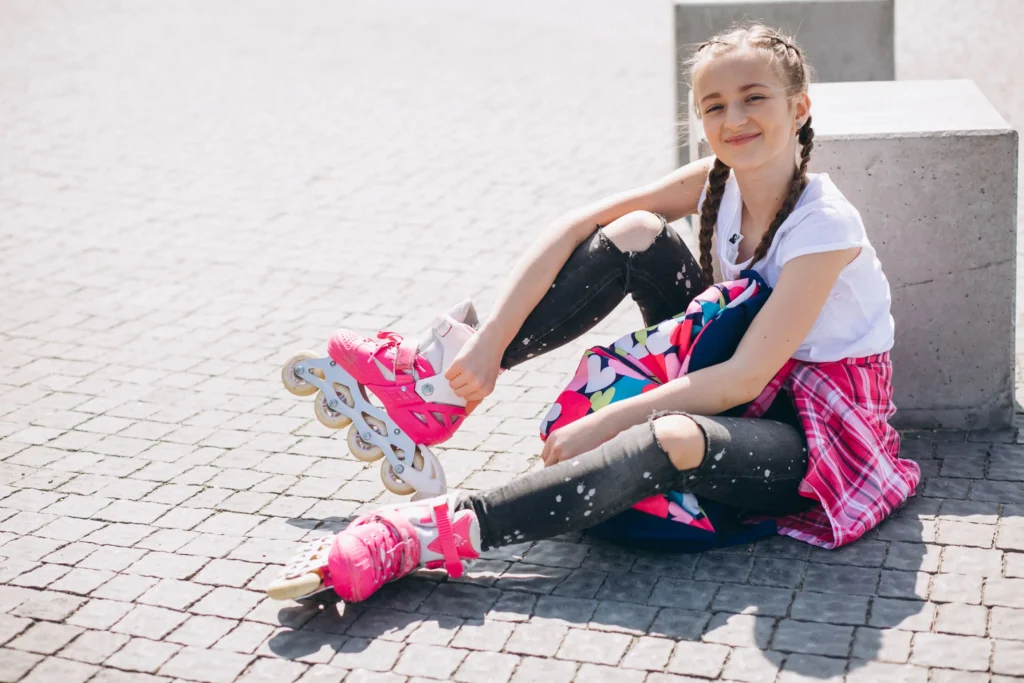
Compression socks are said to offer several vital benefits along with aiding in improving specific health issues. Here are some of the benefits these socks offer.
- Helps improve blood flow and circulation as oxygen-rich blood flows throughout the body.
- Works to reduce pain, swelling, and discomfort in legs, ankles, and feet.
- Assist in lessening muscle straining during exercise.
- Works to lessen dizziness,
- Assist in lowering DVT (Deep Vein Thrombosis), a type of blood clot. These socks also prevent blood clots when standing or sitting for a long time. Also, these aids the veins to treat spider and varicose veins.
I suggest you consult with the health specialist; don’t just randomly impose this sock on your children as a solution. This sock isn’t usable for everyone and depending on the user the benefit may not work. So, take precautions before using.
Types of Compression Socks
Compression socks are mainly categorized into the following three.
1. Graduated Compression Stockings/ Socks
This is a common type of sock and is available with a variety of tightness, but it requires a doctor’s recommendation to use one. The tightness of these socks is gradual, mostly in the ankle area, and less upwards, up to the knee area. Generally, doctors recommend these socks to patients having orthostatic hypotension, peripheral edema, or blood pressure drop upon standing due to blood pooling in the legs.
2. Anti-Embolism Stockings or Thrombo-Embolic Deterrent (TED) Hose
Anti-embolism stocking is mostly used after surgery and to treat DVT (Deep Vein Thrombosis); first, it reduces the risk of it happening, and second, if it occurs, the sock helps improve. DVT is a blood clotting condition in the thigh or lower leg. These types of socks also help ensure the circulation of blood and reduce swelling. However, using these types requires a doctor’s prescription.
3. Non-Medical Support Hosiery
If your child’s leg aches or feels tired, you can use non-medical support hosiery-type compression socks. This sock pretty much offers the same compression. Also, these are the safe categories of compression socks, don’t require any prescribed regulation to use, and are findable in most pharmacies.
Choosing the Right Compression Socks for Kids
Choosing suitable compression stockings requires consideration of several factors because there are so many compression socks for small feet available in the market.
Here are what you should consider before choosing the right type of compression socks.
Compression Level
Compression socks are used for compression that will heal or benefit in a certain way. So, understanding the right compression level is important. Here is a most-followed rule of thumb for compression level.
- Low compression (15-20 mmHg): Not too tight, but rather comfortable for regular uses.
- Medium compression (20-30 mmHg): Somewhat tight, usable for daily wear as well as sports recovery, medical recovery, curing varicose and spider veins, etc.
- Up to High Compression (30-40 mmHg): Has severe tightness and recommended to use for serious situations such as DVT, severe varicose veins, serious swelling, etc.
- Firm compression (40-40 mmHg): Used for patients with a history of severe blood clotting or vein problems.
The tightness for children may vary and might not require a serious level. So, consult with a pediatrician before letting your child use these socks.
Sock Materials
Consider fabric materials while choosing compression socks. The comfortability of fabrics will ensure how long your child is willing to endure the compression. These types of socks have different fabric materials. Such as:
- Cotton or Wool: A great option for daily use, swelling, and varicose veins, it offers heat and moisture.
- Sheer fabric: Lightweight and transparent, usable with different types of clothes due to a fashionable look.
- Opaque fabric: Easy to wear for both men & women and offers enough compression.
Type Selection
As mentioned earlier, there are various types of compression socks; you have to be sure which one you need. If you are using a pair of socks, but they aren’t offering the support they should, then the socks might need an upgrade. The safest way is to ask a pediatrician to recommend one for your children.
How to Introduce Compression Socks to Kids?
Compression socks are similar to other socks, with a little bit of squeezing feeling. If your child is already used to wearing socks, then you won’t have much difficulty. However, if they are just learning about wearing socks and have to wear compression socks, then the only difficulty you will face is they will whine about the socks being too tight. If so, here is how you can introduce the compression socks to your kids.
Step 1: Show by Example
Wear your pair of socks in front of them (it doesn’t have to be another compression sock). When you are doing so, make some positive remarks, such as, “It is so comfortable; by tightening it, it is removing my leg pain. I will wear it every day from now on.” This will convince them to wear socks just like you.
Step 2: Let Them Do It, and Assist if You Need to
When your children are trying to wear the socks by themselves, stay close to them. Help them if they need any help, but let them do the work themselves. So that they can get used to it.
Step 3: Encourage Learning New Skills
Motivate their small improvements in wearing the socks. Be happy for them and admire them for learning a new skill.
Step 4: Convince When They Complain
Whenever they feel tight, they might tell you it hurts. Explain to them as simply as possible, and tell them this tightness will help the pain go away, and after a few times of wearing it, they will feel good.
Who Are the Users of Compression Socks Other Than Kids?
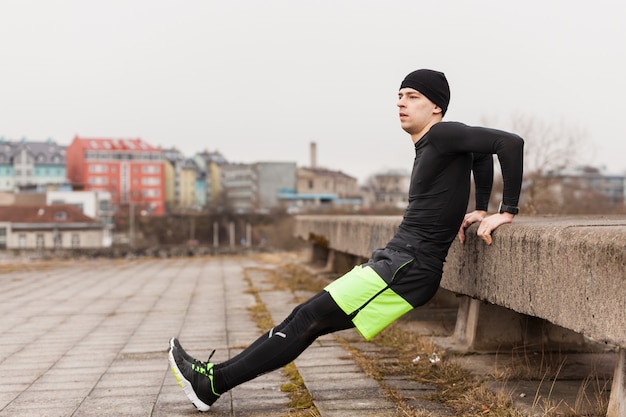
A lot of people of different ages use compression socks. As this is a medically suggested healing wearable, people are very comfortable and find these helpful for treating their leg pain-related problems. So, what type of people are they? Let’s get to know them.
- Athletics: Such as runners, cyclists, and hikers. They need to improve blood flow and oxygen delivery while they are practicing. They also use it to fasten their post-workout recovery.
- Patients with leg pains: Using compression socks can help blood flow inside the ankle, feet, and leg. It also offers relief from leg cramps. Thus, it helps progress the healing.
- Pregnant women having foot swelling issues: They can wear these socks as they help reduce swelling in the ankles, feet, and legs.
- Passengers of airplanes: Wearing compression socks during flying can help increase circulation. It also helps minimize the risk of DPT development.
- Some specific professionals: For example, nurses and hospitality servers. They have to stand on their feet for a long time. Wearing these socks can aid in relieving pain, swelling, and fatigue that is caused by standing for a long time and improves oxygen flow.
When To Avoid Wearing Compression Socks?
Compression socks are generally available in thigh-high and knee-high lengths. Using compression socks is beneficial, but some health conditions should be completely avoided when using compression socks. Here are what those conditions are.
- Having skin problems, diseases, or open wounds
- Having irritation on compression socks’ fabric material
- Suffering from blood clotting in the leg. Then wearing these socks might move the blood clot to a different place.
- Patients with severe arterial insufficiency as it might prevent blood flow.
- Suffering from peripheral neuropathy as the discomfort in the feet can’t be understood.
- Patients with congestive heart failure
- Having health issues of extreme sensory deficits.
Frequently Asked Questions (FAQs)
Question: At what age can a child start wearing compression socks?
Answer: Upon being prescribed by a pediatrician, children can wear compression socks at any age. However, it’s better to let them use it at the age of 5.
Question: Who should not wear compression socks?
Answer: Patients with peripheral vascular disease, arterial insufficiency, any type of skin infection or open wound on the leg, and allergic to compression socks materials should avoid wearing compression socks.
Question: Is it OK to wear compression socks for no reason?
Answer: Though it is OK to wear compression socks for no reason, as they offer benefits for leg swelling and leg pain, always stay conscious about using them just to be safe.
Conclusion
Compression socks are one of the pediatric compression garments that are very beneficial for lower leg and foot treatment, blood flow, pain reduction, blood circulation, and prevention of blood clots. Even so, no matter how safe the socks are, it is best if you allow your child to use them as prescribed by the patricians and avoid the factors that trigger any health condition due to using the socks.

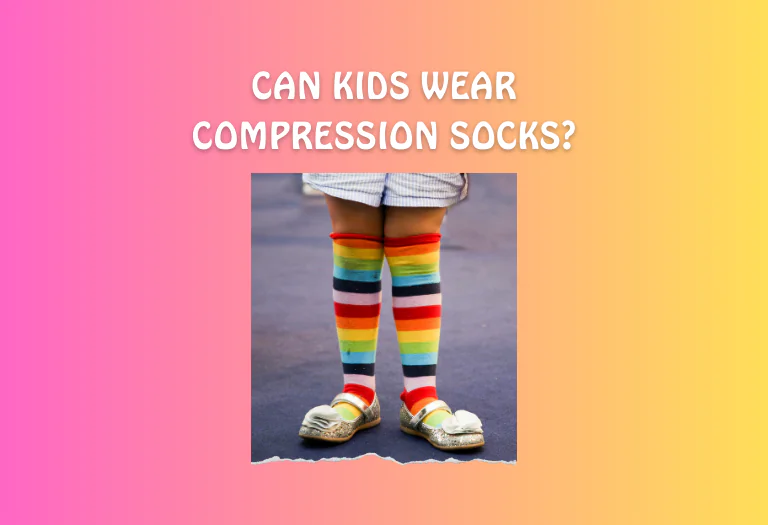

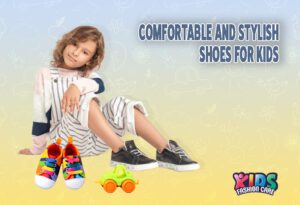
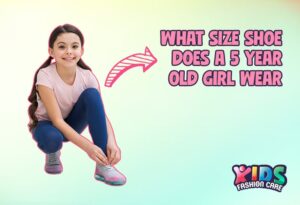
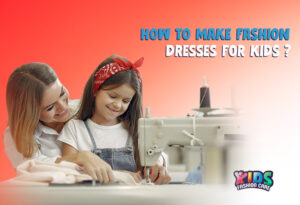
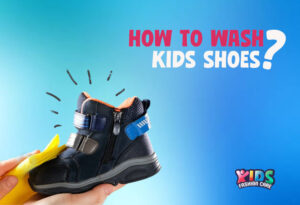
[…] a unique solution for kids. These socks improve blood flow and reduce swelling. Kids aged 5 and up can benefit from these socks. Pediatricians often recommend them for children with specific […]